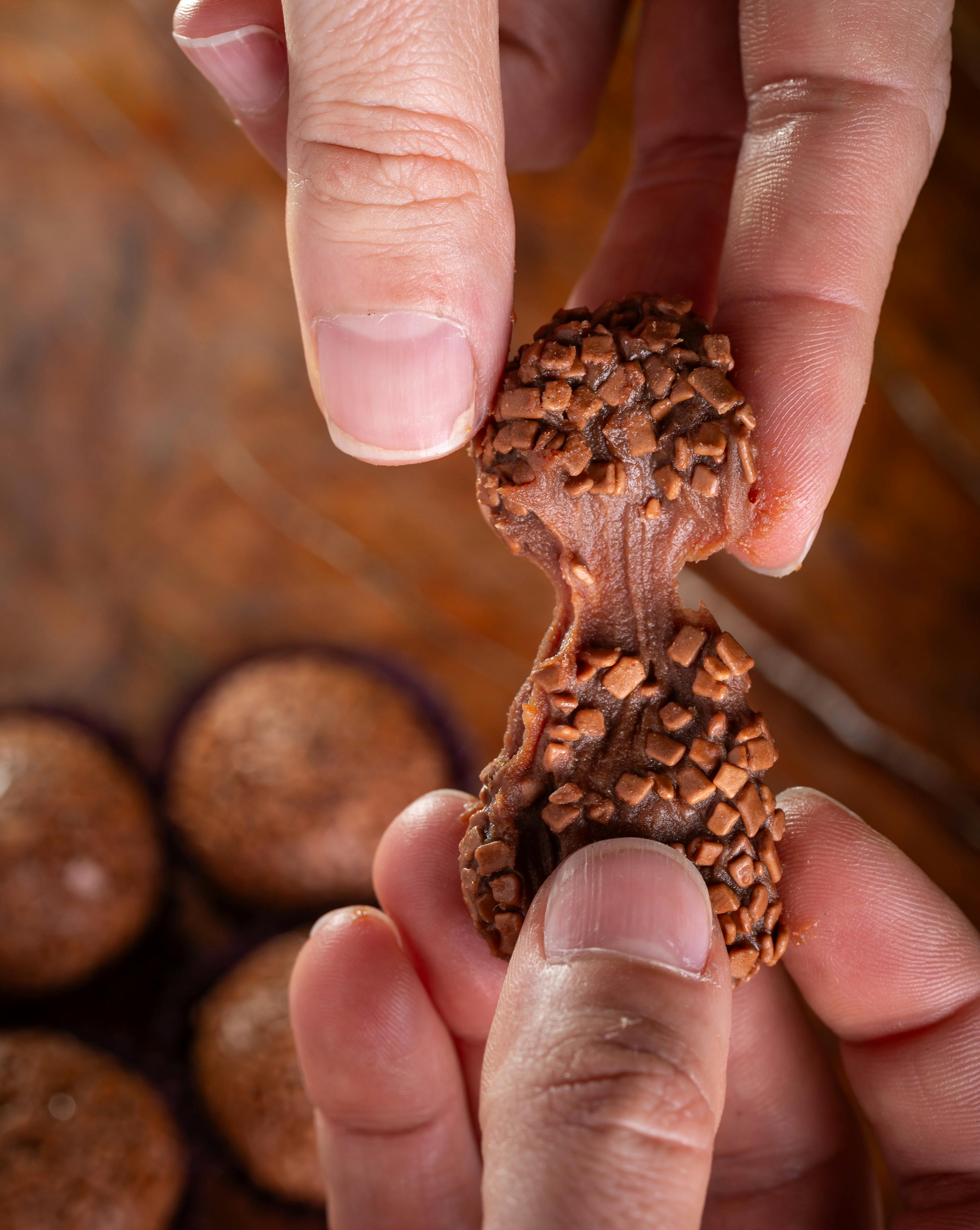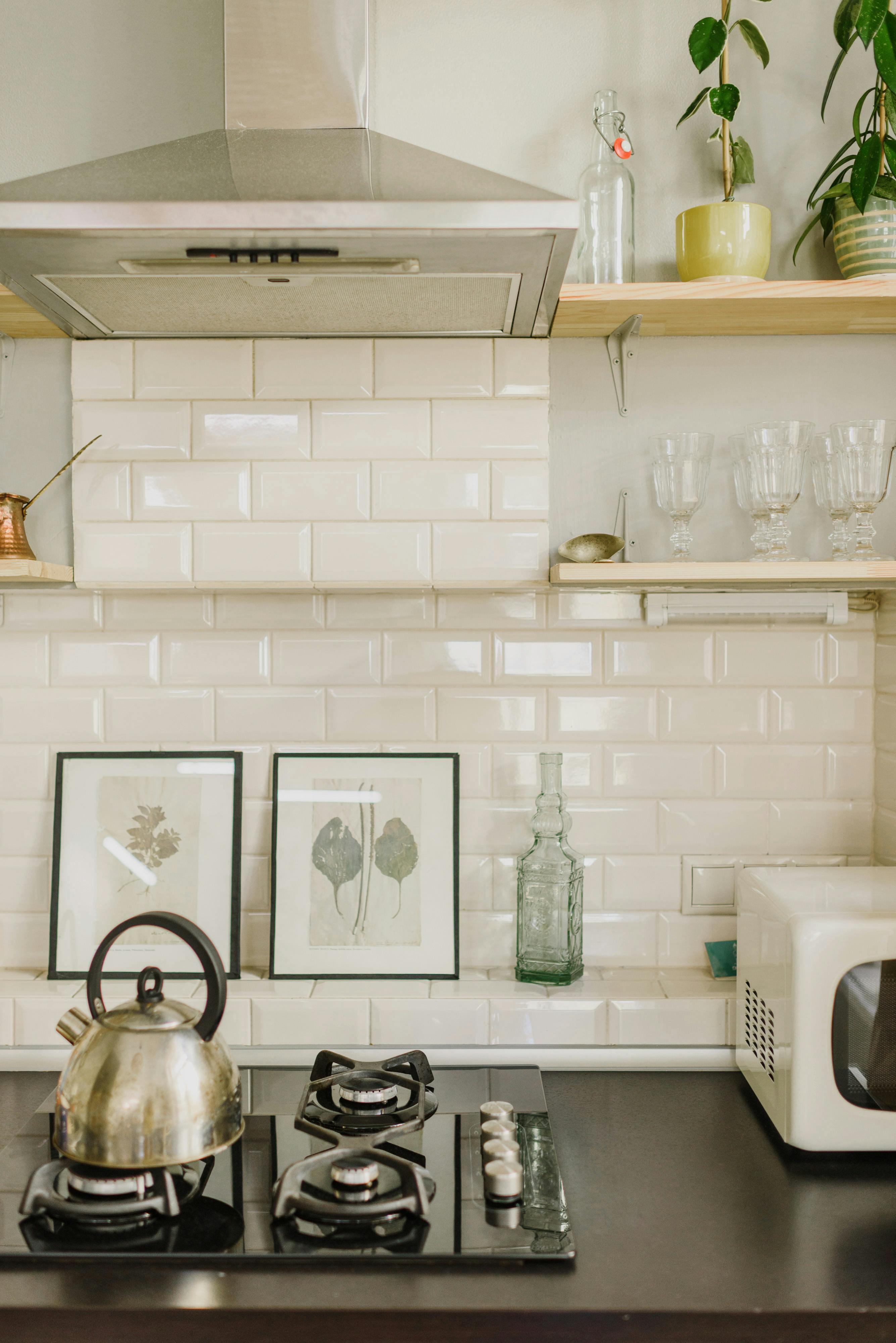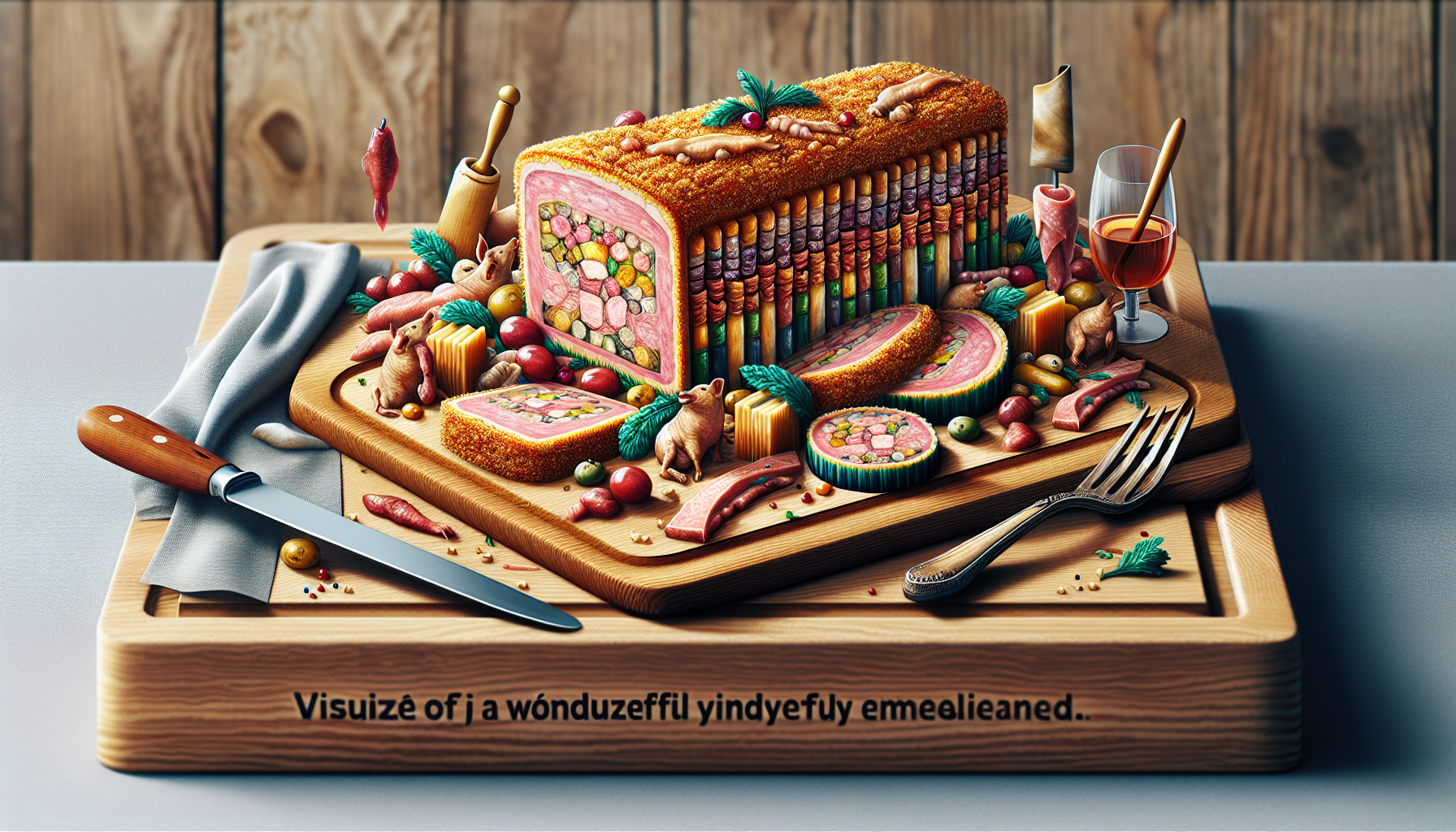If you have ever wondered how to create the perfect pâté or terrine, look no further. At Tastepan.com, we have a plethora of tantalizing recipes that will guide you in mastering these culinary delights. Whether you are seeking a classic comfort food or an exotic international dish, our step-by-step instructions and expert tips will ensure that your creations are nothing short of extraordinary. Get ready to embark on a culinary adventure like no other as you delve into the art of pâté and terrines.

Pâté and Terrines Basics
Understanding Pâté and Terrines
When it comes to French cuisine, two delicacies that immediately come to mind are pâté and terrines. Pâté and terrines are both types of savory dishes made from a mixture of ground meats and various seasonings. These dishes are often enjoyed as an appetizer or as a main course, and they can be served hot or cold. Understanding the nuances of pâté and terrines is the first step to mastering the art of creating these delectable treats.
Differences between Pâté and Terrines
While pâté and terrines may seem similar, there are a few key differences between the two. Pâté is typically smoother in texture and is often made from finely ground meats such as poultry, pork, or liver. It is then mixed with fat and various seasonings to create a rich and creamy spreadable paste. On the other hand, terrines have a coarser texture and are usually made with a combination of ground meats like beef, pork, or veal. Terrines are often cooked in a rectangular dish called a terrine mold, which gives them their distinct shape.
Choosing the Right Meats
When it comes to making pâté and terrines, choosing the right meats is crucial. The meats you select will greatly impact the flavor and texture of the final dish. For pâté, lean meats like chicken, turkey, or lean pork are excellent choices. If you prefer a more robust flavor, you can also use liver, such as chicken liver or duck liver, to add depth. For terrines, a combination of meats like beef, pork, and veal is commonly used. It’s important to choose meats with a good balance of lean meat and fat to achieve the desired texture and flavor profile. Experimenting with different meat combinations will allow you to discover your preferred mix.
Preparation and Equipment
Selecting the Ingredients
Before you begin preparing your pâté or terrine, it’s crucial to select the best ingredients. Fresh, high-quality meats are essential for achieving a delicious end result. Look for meats that are free of any unpleasant odors or discoloration. Additionally, if you’re using any offal or liver in your recipe, make sure it is of the highest quality to ensure the best flavor. Don’t forget to gather the necessary seasonings and flavorings, such as herbs, spices, and aromatics, as they play a key role in enhancing the taste of your pâté or terrine.
Prepping the Meat
Once you have your meats, it’s time to prepare them for the pâté or terrine. Start by trimming away any excess fat or connective tissue, as this can affect the texture of your final product. It’s important to cut the meat into small, uniform pieces before grinding or mincing. This ensures that the flavors are evenly distributed and that the meat is easier to process. Take your time with this step, as proper preparation is the foundation for a successful pâté or terrine.
Choosing the Right Equipment
To achieve the desired texture and shape of pâté or terrine, you’ll need the right equipment. A food processor or meat grinder is essential for grinding the meats to the desired consistency. If you prefer a coarser texture, a food processor will be sufficient. For a finer texture, a meat grinder attachment for a stand mixer or a dedicated meat grinder is recommended. Additionally, a terrine mold or loaf pan will be needed to shape and cook your pâté or terrine. Ensure that your chosen equipment is suitable for the recipe you plan to make.

Pâté and Terrines Techniques
Mixing and Grinding the Meat
Now that you’ve prepped your meat and assembled your ingredients, it’s time to start mixing and grinding. If using a food processor, add the meat in batches, being careful not to overcrowd the bowl. Pulse the processor until the meat reaches the desired consistency, making sure not to overprocess and risk turning the mixture into a paste. If using a meat grinder, pass the meat through the grinder at least twice for a finer texture. Take care not to overwork the mixture, as this can lead to a tough and dry pâté or terrine.
Adding Seasonings and Flavorings
One of the most exciting aspects of making pâté and terrines is the opportunity to experiment with various seasonings and flavorings. From classic combinations like herbs de Provence and garlic to more unique flavors like truffle oil or dried fruits, the options are endless. Add your chosen seasonings and flavorings to the meat mixture and mix well to ensure even distribution. Don’t be afraid to get creative and tailor the flavors to your preferences. Remember to taste the mixture and adjust the seasoning as needed before proceeding.
Incorporating the Fat
Fat is an essential component of pâté and terrines. It adds moisture, richness, and flavor to the final product. The fat can be incorporated in different ways depending on the recipe. Some recipes call for adding diced or finely minced fat directly to the meat mixture, while others require the creation of a separate fat layer within the pâté or terrine. Whichever method you choose, make sure the fat is evenly distributed throughout the mixture to prevent any dryness. Properly incorporating the fat is crucial for a luscious and succulent result.
Creating Layers and Fillings
Building Layers
One of the distinguishing features of pâté and terrines is the layered presentation. Layering not only adds visual appeal but also creates a harmonious combination of flavors and textures. To build layers, simply alternate between the meat mixture and any fillings or enhancements you desire. This could include sautéed mushrooms, cooked spinach, or even pieces of cured ham. Take care to press each layer firmly to eliminate any air pockets and ensure a smooth and cohesive final product.
Adding Fillings and Enhancements
In addition to building layers, pâté and terrines provide an opportunity to add fillings and enhancements to elevate the dish further. This could involve stuffing the pâté with a mixture of dried fruits and nuts or incorporating various cheeses into the terrine. Consider the flavors and textures you want to achieve and select fillings and enhancements that complement the meat and seasoning profile. Be sure to distribute them evenly within the layers to ensure balanced bites throughout.
Understanding Aspic
Aspic is a gelatinous substance made from stock, typically enriched with wine or brandy, which is used to encase pâté and terrines. It acts as a natural sealant and helps preserve the dish while adding an elegant touch. To incorporate aspic, pour a small amount into the terrine mold or loaf pan and allow it to set slightly. Then, layer the pâté or terrine mixture on top and continue building as usual. Once the dish is cooked and cooled, the aspic will solidify, providing a protective layer and enhancing the overall presentation.

Cooking and Baking
Baking Techniques
The cooking method for pâté and terrines may vary depending on the recipe and individual preferences. Baking is the most common method, as it allows the flavors to meld together while ensuring even cooking throughout. Preheat your oven to the specified temperature and place the terrine mold or loaf pan in a larger baking dish. Fill the baking dish with hot water until it comes halfway up the sides of the mold or pan. This will create a gentle and even heat distribution, resulting in a moist and evenly cooked pâté or terrine.
Temperature and Timing
The ideal internal temperature for cooked pâté and terrines is around 160°F (70°C). Use a meat thermometer to accurately gauge the temperature during cooking. The cooking time will vary depending on the size and thickness of your pâté or terrine. A common guideline is to bake at a lower temperature, such as 300°F (150°C), for a longer period. This ensures that the meat cooks evenly without drying out. Remember to periodically check the internal temperature as you approach the end of the cooking time to avoid overcooking.
Water Bath Method
To prevent your pâté or terrine from drying out during the cooking process, it is essential to use a water bath. This method involves placing the terrine mold or loaf pan in a larger baking dish filled with hot water. The water bath acts as a temperature regulator, preventing the pâté or terrine from overheating and drying out. Additionally, it helps to maintain a moist cooking environment, leading to a tender and succulent result. Carefully remove the dish from the oven after cooking, and allow it to cool before serving or refrigerating.
Presentation and Garnishing
Unmolding and Slicing
Once your pâté or terrine has been cooked and properly cooled, it’s time to unmold and slice it. Carefully run a knife along the sides of the mold or pan to release the edges of the dish. Place a serving platter or cutting board upside down on top of the mold or pan, and flip it over in one smooth motion. Gently tap the mold or pan to release the pâté or terrine. To achieve clean, even slices, use a sharp knife and wipe it clean between each cut. Take your time and savor the beautiful layers and textures that you’ve created.
Garnishing Options
Garnishing your pâté or terrine can take its presentation to the next level. Consider adding a touch of elegance by topping it with fresh herbs, such as parsley or chives, or decorative edible flowers. Alternatively, you can garnish with a drizzle of sauce, such as a tangy cranberry relish or a spicy mustard. The choice of garnish depends on the flavors and aesthetics you want to highlight. The key is to keep it simple and let the flavors of the pâté or terrine shine.
Accompaniments and Pairings
Pâté and terrines are best enjoyed with complementary accompaniments and pairings. Classic choices include crusty bread or melba toast, which provide a sturdy base for spreading the pâté or terrine. Cornichons, pickled onions, or a variety of artisanal mustards also add a delightful tang that complements the richness of the dish. Wine pairings can be as diverse as the flavors of pâté and terrines themselves. Opt for a dry white wine, a light red wine, or even a sparkling wine, depending on your personal taste preferences.
Storage and Preservation
Proper Storage Techniques
To ensure the longevity of your pâté or terrine, proper storage techniques are essential. Once the dish has cooled, wrap it tightly in plastic wrap or place it in an airtight container. This will prevent the pâté or terrine from drying out and absorbing odors from the refrigerator. Properly stored, it can last for up to a week, maintaining its flavor and texture. Remember to always store perishable foods at the appropriate temperature to avoid any risk of spoilage.
Freezing and Thawing
If you have a large batch of pâté or terrine or simply want to enjoy it at a later time, freezing is an excellent option. Wrap individual portions tightly in plastic wrap, followed by aluminum foil, and store them in a freezer bag. Frozen pâté or terrine can last for several months, and it’s easy to thaw portions as needed. When ready to enjoy, transfer the wrapped portion to the refrigerator and allow it to defrost slowly overnight. Avoid thawing at room temperature, as this can lead to undesirable texture changes.
Shelf Life
While pâté and terrines can be stored for up to a week, it’s important to be aware of their shelf life. Due to the presence of meat and other perishable ingredients, it’s recommended to consume your pâté or terrine within three to four days for the best quality. Always use your judgment and discard any leftover portions that show signs of spoilage, such as an off smell or unusual texture. Freshness and food safety should always be a priority.
Pâté and Terrines Variations
Classic Pâté Variations
The world of pâté offers a wide range of classic variations to explore. From the rich and indulgent foie gras pâté to the rustic and hearty country pâté, each variation has its own unique charm. Experiment with different meats, spices, and flavorings to create your signature pâté. Don’t be afraid to try unconventional combinations like chicken liver with caramelized onions or a seafood pâté featuring scallops and shrimp. The possibilities are endless, making pâté a versatile and exciting culinary adventure.
Regional Terrine Specialties
Terrines are beloved throughout different regions, each offering its own specialty. From the traditional French terrine de campagne, made with pork, to the Italian terrina di verdure, highlighting a variety of vegetables, the world of terrines is vast and diverse. Dive into regional recipes and explore the unique flavors and techniques that make each terrine special. Discover the comforting flavors of a rustic English game terrine or savor the delicate textures of a Mediterranean vegetable terrine. Allow regional specialties to transport you to different culinary destinations.
Vegetarian and Vegan Options
For those following a vegetarian or vegan diet, pâté and terrines can still be enjoyed with a creative twist. Use ingredients like mushrooms, lentils, or tofu as the base for a vegetarian pâté. These alternatives provide a meaty texture and can be seasoned to mimic the flavors of traditional pâté. Vegan terrines can be made using a combination of vegetables, pulses, and grains, such as quinoa or bulgur, layered and seasoned to create a delicious and satisfying dish. Embrace the challenge and explore the world of plant-based pâté and terrines.
Troubleshooting and Tips
Preventing Dryness or Texture Issues
Dryness or undesirable texture can sometimes occur when making pâté or terrines. To prevent dryness, ensure that your meat mixture has a good balance of lean meat and fat. Overcooking can also lead to dryness, so be vigilant with cooking times and temperatures. Texture issues can be avoided by properly grinding and mixing the meats, taking care not to overwork the mixture. Additionally, pressing each layer firmly and eliminating air pockets will contribute to a cohesive and moist final product.
Improving Flavors
If you find that your pâté or terrine lacks flavor, there are a few ways to enhance it. First, check the seasoning and adjust as needed. Sometimes a sprinkle of salt or a squeeze of lemon juice can make all the difference. If you want to add more depth, consider incorporating additional herbs, spices, or even a hint of alcohol like brandy or sherry. Allow the flavors to develop by refrigerating the pâté or terrine for a day or two before serving. This will give the ingredients time to meld together, resulting in a more flavorful dish.
Creating Artistic Designs
One of the joys of making pâté and terrines is the opportunity to showcase your creativity through artistic designs. You can create marbled effects by alternating different colored mixtures, such as a meat mixture and a vegetable puree. Use cookie cutters or molds to create decorative shapes or patterns within your terrine. Play with textures by layering different fillings like roasted red peppers or black olives. The key is to let your imagination run wild and have fun with the process. Your artistic designs will impress both the eye and the palate.
Exploring Pâté and Terrines
Joining Culinary Workshops and Classes
If you’re eager to dive deeper into the world of pâté and terrines, consider joining culinary workshops and classes. These hands-on experiences allow you to learn from experts, gain new techniques, and discover exciting flavor combinations. Engage with fellow food enthusiasts, expand your knowledge, and refine your skills. Whether you’re a beginner or an experienced home cook, culinary workshops and classes offer a valuable opportunity to immerse yourself in the art of pâté and terrines.
Visiting Specialty Charcuterie Shops
To fully appreciate the craftsmanship and variety of pâté and terrines, visit specialty charcuterie shops. These establishments pride themselves on producing artisanal pâté and terrines with impeccable quality. Take the time to browse their selection, engage with knowledgeable staff, and sample different flavors and styles. Many shops also offer the opportunity to purchase freshly made pâté and terrines, allowing you to savor the unique creations without the need for preparation. Enhance your culinary journey by supporting these local artisans and indulging in their offerings.
Discovering New Recipes and Inspirations
Continuously expanding your repertoire of pâté and terrines is essential to mastering the art. Seek out new recipes and inspirations from cookbooks, online sources, and culinary magazines. Experiment with different ingredients, techniques, and flavor combinations to unleash your creativity. Keep a notebook or digital file to document your favorite recipes, adaptations, and personal discoveries. This will serve as a valuable resource for future culinary endeavors. Embrace the joy of exploration, and let your passion for pâté and terrines guide your culinary adventures.
As you embark on your journey to master the art of pâté and terrines, remember that practice and experimentation are key. With each new recipe, technique, and flavor combination, you will refine your skills and develop your own unique style. Enjoy the process, savor the flavors, and share your creations with others. Pâté and terrines are a celebration of culinary artistry, and by delving into this world, you are sure to elevate your culinary adventures to new heights. Happy cooking!

